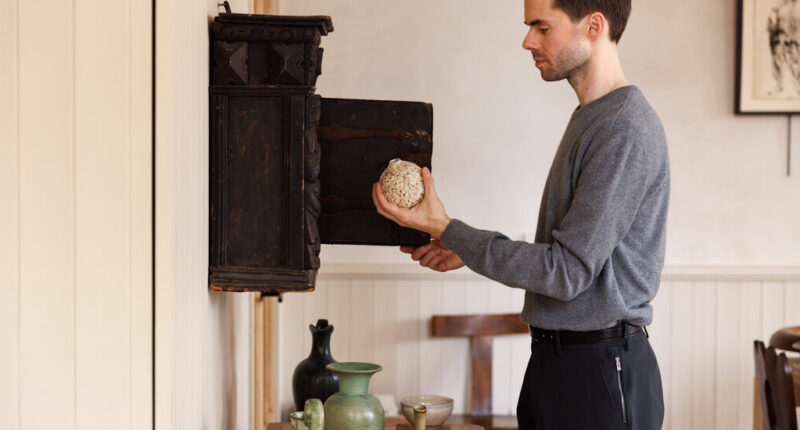
You see them on Instagram and in design magazines: those perfectly composed coffee tables that tie a living room together and hint at the fabulous taste of the homeowners.
How do those tablescapes come together? How does someone decide which accessories to use? And how can you compose a similar one in your home — without doing too much or too little?
Colin King, an in-demand interiors stylist, welcomed a reporter into his TriBeCa loft to demonstrate how he does it.
Mr. King — who styles photo shoots for companies like Roman and Williams Guild and Anthropologie, as well as homes for magazines like Architectural Digest — typically comes in after the architects and interior designers are done. That’s when he adds the finishing touches that make rooms sing.
“For me, styling is a way of looking,” said Mr. King, who published a book called “Arranging Things” with Rizzoli in March. “It’s about creating simple vignettes that bring joy to the home. A bowl, a candlestick, a branch — all these things can be so much more than an object when they’re arranged.”
As he put it concisely: “It’s the power of placement.”
When he styles a coffee table, “there’s no strict formula, because every coffee table is different and every person’s collection is different,” he said. “But I can definitely share what has worked for me.”
Here are the steps he follows.
Start With a Blank Slate
To style any tabletop, don’t add to the things that are already there. Instead, clear everything away.
“I always start clean,” Mr. King said. “It can be daunting to do that, but I really like to see the surface I’m working with.”
It also helps to ensure the tabletop won’t end up too crowded. “Negative space is good and gives more opportunity for the objects you do pick to have space around them,” he said. “It makes each one more important.”
Build Up With Books
Then he adds books. “People get caught up in choosing coffee-table books, like they need a certain size or a certain weight,” he said. “But I like to play with scale, and even add pamphlets or smaller books.”
Usually, he creates stacks of two or three books, using some as mini-pedestals. “They’re like platforms or risers for other objects,” he said. “It gives you this topography. I like to have fairly plain covers on top, just because they help frame objects nicely.”
He also orients the covers to face the sofas and chairs around the table to encourage people to pick them up.
Collect Sculptural Accessories
Use one or two of the stacks to hold objects with personality: favorite bowls, pieces of sculpture. “Putting things out that you want to look at every day or that evoke some sort of memory is really important,” he said.
That includes ceramics made by friends and antiques from far-flung places, but also found objects.
“It can be anything you find around the house or on the street,” he said, like an unusual piece of stone or a length of driftwood. “A rock can be just as important as a piece a friend made or a gift I was given.”
Create a Cluster of Objects
For a large table, create a cluster of objects with a similar quality but different heights. “I like to pick three objects of varying heights, so there’s a nice dialogue between them,” Mr. King said. “I might have books on one end of the table and then my objects on the other.”
In his TriBeCa loft, he grouped a tall ceramic pot, a medium-size vase and a low tray with similar colors at one end of the table. “These all have a very similar palette, with browns and blacks,” he said. “None were bought or found at the same time, but discovering similarities in objects you have around your house is part of the process.”
Plan for Real Life
If your table is cluttered with things like remote controls, phone chargers and keys, make a plan to contain them so they don’t detract from your composition.
“Boxes are really great for coffee tables, because you can store things away, out of sight,” said Mr. King, who placed an antique tea box on his coffee table. “A lot of people will use a tray, but I don’t love that, because you want to cover things up.”
Add a Touch of Nature
“I like to add one element of nature as my last thing,” he said. “People think it has to be this big arrangement on a coffee table, but I might just add one stem.”
Frequently, he chooses a single flower or branch for a vase.
Finish With Photos
If you plan to share your styled table on Instagram, review the arrangement by taking a snapshot.
“I always take a picture and style through my phone,” said Mr. King, who makes small adjustments based on what he sees on his screen. “Until you see it on camera, you don’t really see the full composition.”
For weekly email updates on residential real estate news, sign up here.
Source: | This article originally belongs to Nytimes.com









